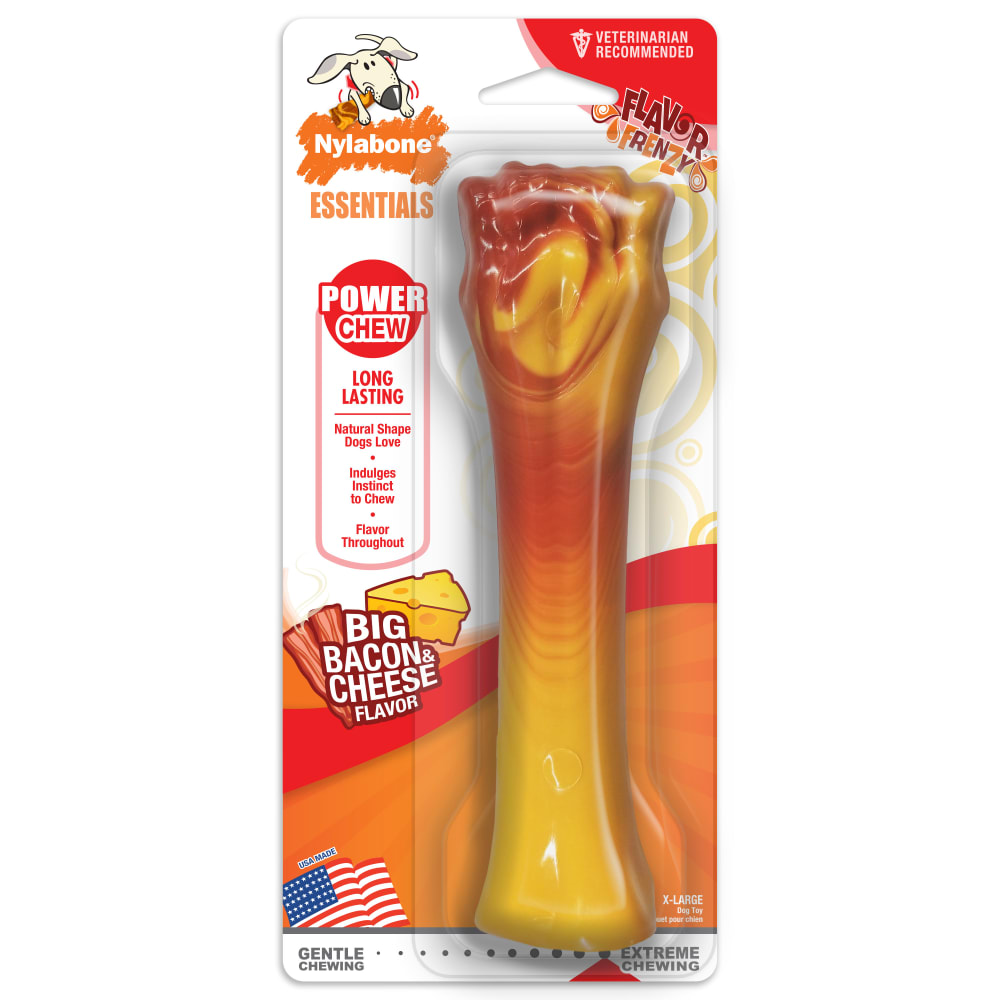Ultimate New Puppy Checklist and Printable Shopping List
Welcoming home a new puppy? Congratulations! It's one of the most memorable moments of being a pet parent.
Beyond researching which breed best matches your lifestyle and creating a shortlist of your favorite names, you will also need to be prepared with a variety of essential items to keep your new furry family member healthy and happy.
From food and treats to toys and training aids, picking up these puppy supplies in advance will save you multiple trips back and forth to the store—and buy you more quality time with your new pup!
Food and Treats

Puppy-friendly food — The first and most important item on our new puppy checklist is food! Because pups develop mentally and physically by the week, they need a high-quality diet to support this rapid growth. Different breeds have varying dietary needs, so be sure to research the diet and food that is best for your pup.
If your puppy is six to 12 weeks old, they should eat four times a day, while puppies three to six months old should eat three times a day. By the time your puppy is six months old, feedings should decrease to twice a day, according to the American Kennel Club.
If possible, ask your puppy's breeder or shelter what your pup has been eating because you may want to continue feeding them the same. However, if you decide to switch up the food or brand, read the bag's instructions for how to make a gradual transition—and avoid upsetting your fur pal's stomach.
Water and food bowls — Water and food bowls will be used multiple times throughout each day, so you should invest in bowls that are high quality and made of a material that stands up to frequent cleaning, such as stainless steel. Look for bowls with a rubber bottom to minimize skidding and ensure the bowls stay in place for your developing pup. Plus, your floors will thank you.
Puppies can be messy, so to minimize cleanup time, place the bowls on a hard surface or mat. Another great idea is to use a disposable training pad under the bowls.
Chew treats — Puppies are chewers by nature, and tasty treats will keep them busy and happy. Look for treats that are made with quality ingredients; free of artificial preservatives, colors, or flavors; and gentle on their delicate digestive system. Some chew treat varieties, such as select Healthy Edibles® Puppy Chew Treats, even include DHA Omega-3 to support brain and eye development.
Training treats — Training treats are essential for rewarding your pup when you are teaching them new tricks and behaviors such as going potty outside, responding to their name, and the "sit" command. Training will require plenty of positive reinforcement, so small chew treats are a smart option for frequent treating.
Bully sticks — If your pup can manage firm treats, bully sticks are a natural and long-lasting chew option. Made with just one ingredient, they are high in protein and dogs go wild for their savory flavor! Check with your vet if you're unsure if your pup is ready for bully sticks.
Containment and Bedding

Crate — If you decide to use a crate, it will be your dog's safe haven for overnight sleeping or when they just want some peace and solitude. When choosing a crate, ensure that there is enough room for your pup to stand up, turn around, and stretch in their sleep. Don't provide too much space, though; most dogs instinctively won't go to the bathroom where they sleep, but extra room may invite an in-crate accident.
Crate pad — Since your dog's crate is their nighttime retreat, you will want to make it cozy. A crate pad lines the inside of the crate to provide extra support and comfort. Plus, it serves as a layer of protection if your pup has an accident.
Travel kennel — Whether you are going on those initial and important vet visits, introducing your dog to new friends and family, or just venturing on the road with your pup, a travel kennel allows you to safely transport your fur kid. Like a crate, your travel kennel should fit your dog comfortably without too much space for them to accidentally go potty.
Gates or playpen — You will want your pup to roam and explore, but let's be honest: you may not want them in every inch of your home. Gates give your puppy freedom while preventing them from entering parts of the house that are off limits.
There are various types of gates—free standing, pressure mounted, and even permanent screw-mounted variations. If you don't have an area you can gate off, you can invest in a playpen that allows your puppy to stretch and play in an enclosed area where you can keep an eye on them.
Chew-proof bed — While the crate is for your fur pal to sleep overnight, a dog bed is perfect to keep in your living room or common area so your pup can hang with the family after a long day of learning tricks and enjoying belly rubs.
Avoid beds with soft, plush filling and look for a chew-proof bed so your puppy won't be able to tear it up or even possibly ingest it. Find an option with a removable machine-washable cover to make cleaning simpler.
Walking and Safety
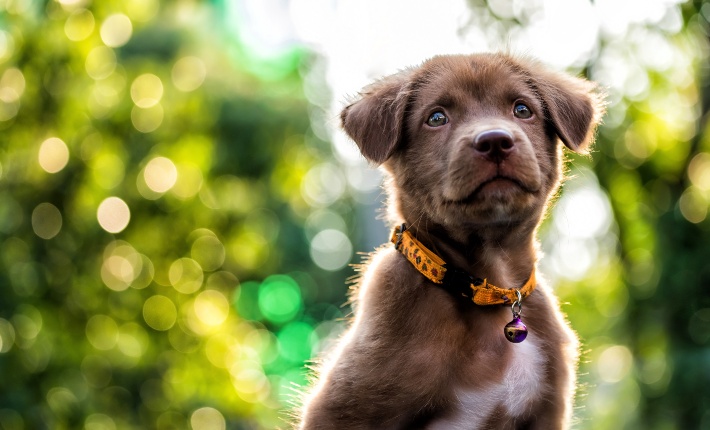
Collar or harness — Your dog's collar is not only essential for walking your pup and holding their identification, but it also shows off their personality! To ensure the collar is the right size, you should be able to fit two fingers comfortably underneath while your dog is wearing it. Look for a lightweight nylon collar that will be soft on their neck.
If you find that your dog likes to pull, a harness offers better control. They are also ideal for very small dogs that are susceptible to injuries from tugging on the leash, according to the American Kennel Club. However, harnesses can be uncomfortable for some dogs and get caught in their fur.
Leash — Once you find your collar or harness, a leash is the next necessary component for walking your pup. There are two main types of leash options: standard and retractable. Standard leashes do not retract into their handle and are typically better for pups because they allow training and control. Retractable leashes are not recommended for puppies; while they allow more freedom, they teach them that pulling is acceptable. You can start with a thin nylon leash and then invest in a heavier, more durable one made of leather as your pup gets stronger.
Having trouble introducing your dog to the leash? For many pups, it is not a task they instinctively know how to do! Check out these tips for teaching your dog how to walk on a leash.
Identification tag — Adding an identification tag to your puppy's collar is crucial, especially if you are going to take your dog outside frequently. ID tags are typically engraved and include your home address, phone number, and both you and your dog's name so your furry friend can be returned if they ever get lost! You can purchase ID tags online or at your local pet store.
Waste bags and holder — Make a habit of walking with your waste bag holder every time you go outside. Picking up dog poop is not only an eco-conscious practice—it's the law! You can also reuse a plastic shopping bag if you are in a pinch. If you don't pass a public trash can along your walking route, be sure to hold onto the bag until you get home to properly dispose of it.
Pooper scooper — Bags are great when you're on the go, but if your dog goes potty in your yard, pooper scoopers make cleaning up messes more convenient. There are a variety of pooper scoopers available, including designs for picking up waste on the grass or hard, flat surfaces. Choose an option that best fits your needs and aim to clean your yard weekly.
Toys
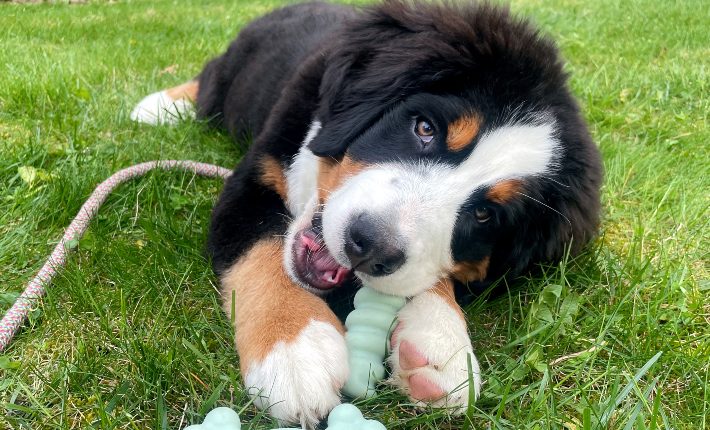
Teething and chew toys — Pups love to chew! In addition to satisfying your dog's natural instincts, chewing helps them explore new surroundings. That is why it is important to encourage healthy chewing habits early on. Chew toys relieve puppies of teething discomfort and help prevent destructive behavior by keeping your best friend away from your shoes and furniture.
Nylabone offers puppy chew toys in a variety of shapes, textures, and puppy-friendly material so you can find the perfect option for your pooch. To keep your fur pal covered throughout their chewing stages, our Puppy Starter Kit includes a Puppy Chew toy perfect for teething and a Power Chew toy that stands up to active chewing.
Interactive play toys — Playtime not only gives your pup an opportunity to burn off tons of energy, but strengthens the bond between you and your furry friend. The Nylabone® Power Play Series includes options designed with satisfying textures, enticing tassels, bouncing action, and other thrilling features for your new pup. Be sure to put any toys out of reach when you're done playing so your fur pal doesn't chew them without your supervision!
Plush toys — A soft plush toy can comfort your pup and help them transition to their new home. If you're lucky, your dog's shelter or breeder may even provide you one of your pup's existing toys, which already has the comforting scent of your fur pal's mama and littermates. As an alternative, there are plush toys with features including virtual heartbeats and warm inserts to mimic sleeping with a puppy's mother. Always be sure to supervise your furry friend while they play with any plush toys and remove the toy if they begin to chew it up.
RELATED: Best Types of Puppy Toys
Potty Time and Cleaning Supplies
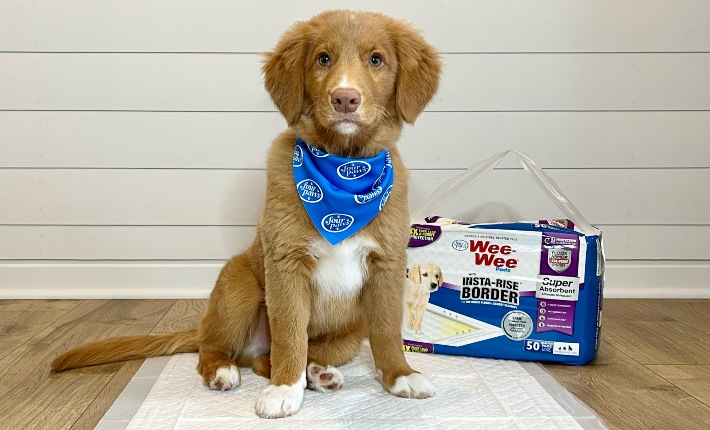
Puppy training pads — One of the most handy items on your new puppy checklist, puppy pads are an essential potty-training tool. They're also perfect for lining the crate, playpen, or anywhere else an accident may occur. Wee-Wee® brand training pads are America's Original Trusted Pads and come in different sizes and varieties, such as Little, Advanced Odor Control, and more. With a built-in attractant, Wee-Wee training pads encourage puppies to do their business on the pad rather than elsewhere in the house.
Chew deterrent spray — Puppies are enthusiastic chewers, so you will want to prevent them from destroying items inside or outside your home. Chew deterrent sprays contain bitter tastes dogs find unpleasant, such as cherry, apple, or lime. In addition to keeping dogs from damaging wood and furniture, some chew deterrent sprays, such as the Healthy Promise® Bitter Lime® Spray, can even be applied directly to your pup to prevent them from scratching themselves.
Grooming Supplies
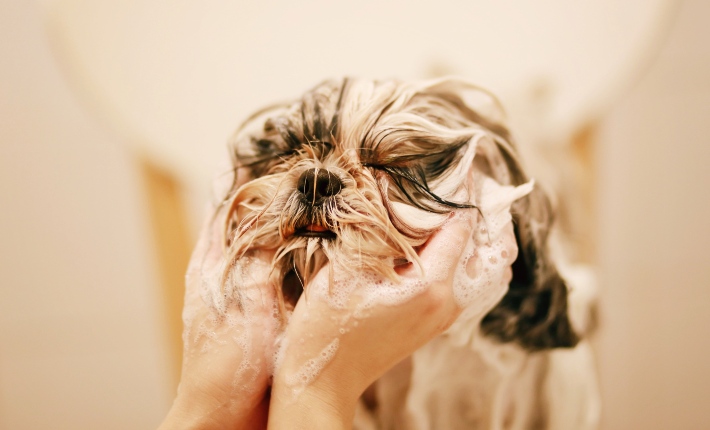
Slicker brush — Along with keeping your pup's coat free of tangles and mats, regular brushing gives you and your dog the opportunity to bond. Plus, it helps them establish positive associations with grooming time from a young age! A slicker brush is a great versatile choice because it can be used for all types of dogs' coats, including short, medium, long, curly, and wiry.
Detangling comb — While the slicker brush will help prevent tangles in your dog's coat, a comb removes tangles and mats so they don't become bigger problems. If you are giving your pup a bath, you will definitely want to work through mats and tangles beforehand so they don't become too difficult to remove.
Gentle shampoo — Dogs' skin has a different pH balance than humans', so your fur friend will need their own shampoo. Puppies require even more of a specifically formulated gentle shampoo that is made for their sensitive and delicate coats. Always avoid your dog's ears and eyes when washing them so they don't get irritated.
Nail clippers — Long nails can be uncomfortable or even painful for your pup. Before you cut your dog's nails at home, though, be sure to educate yourself on the proper technique. Dog nails contain the quick, which is the pink or white area of the nail that holds blood vessels. If nicked, the quick will bleed profusely. If you feel uncomfortable trimming your pup's nails, consult your vet or groomer.
Dog toothbrush and dog toothpaste — Establishing a dental routine from the start will give your pup fresh breath while preventing plaque and tartar buildup. It can even help avoid more serious health problems in the future!
A dog-friendly toothbrush is a must-have because it is designed with softer bristles for sensitive gums and an angled neck for better reach. Dog-specific toothpaste is also necessary because human toothpastes contain ingredients that can upset your pup's stomach. At first, some find it easier to brush their furry friend's teeth with a finger brush, but it is all about you and your pup's preference!
For everything you need to maintain your dog's oral hygiene, the Advanced Oral Care Puppy Dental Kit includes key dental puppy supplies including a toothbrush made for smaller mouths, tartar control toothpaste, and gentle finger brush.
Flea and tick prevention — Ensuring your dog stays free of fleas and ticks is an important preventive measure to keep them healthy. Along with making dogs uncomfortable and itchy, fleas may cause tapeworm. Additionally, ticks can permeate through your home and cause Lyme disease or other serious health complications. However, most flea and tick prevention products aren't safe on puppies until they are at least seven or eight weeks old, according to the American Kennel Club. Before selecting a flea or tick medication, ask your vet which one to use and when it is safe to administer to your fur friend.
When you head out to pick up supplies for your pup, print this shopping list to ensure you get everything you need. With all the items on this new puppy checklist, you can give your little fur pal a warm welcome and begin to make some of the best memories with them! Click here to download your Printable Shopping List!
FOLLOW US!




